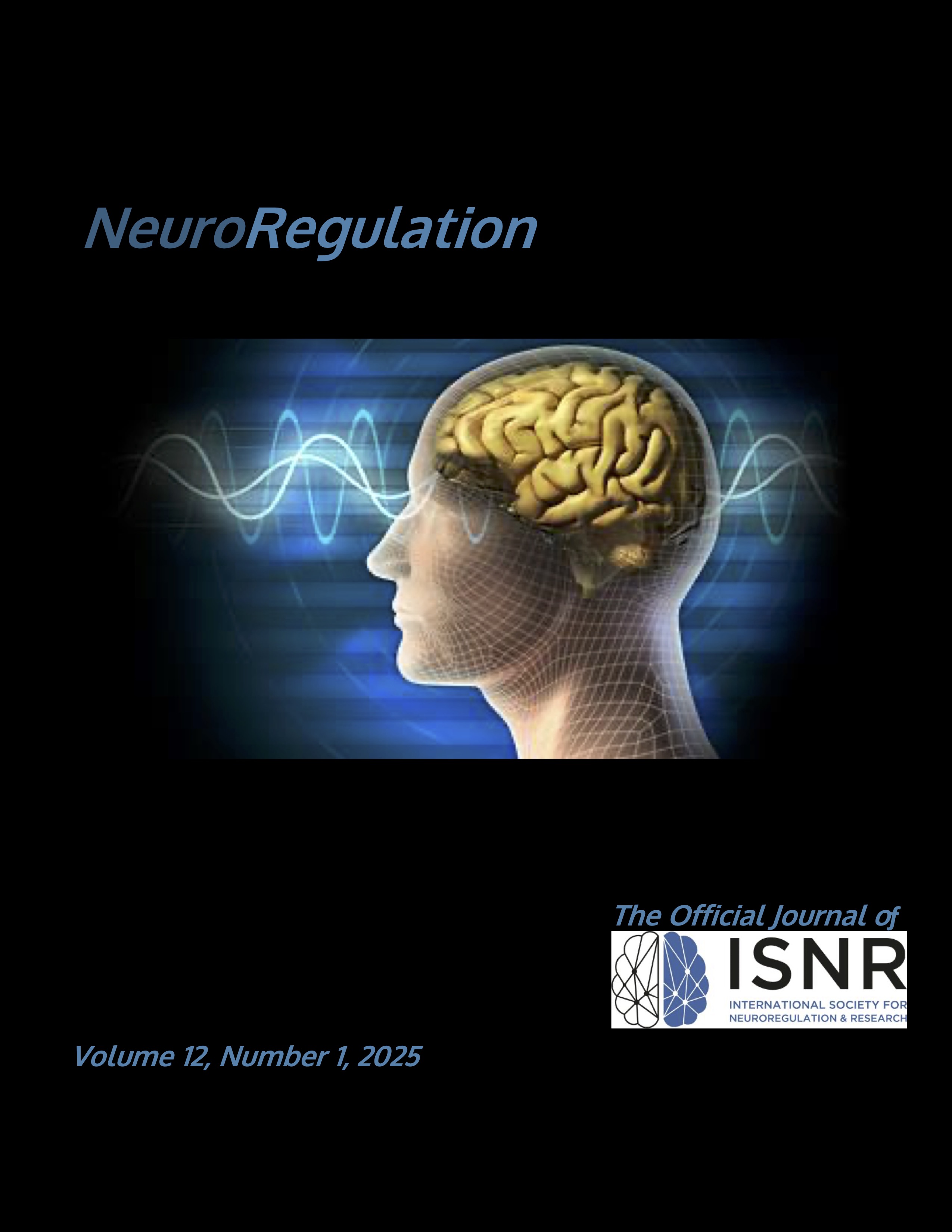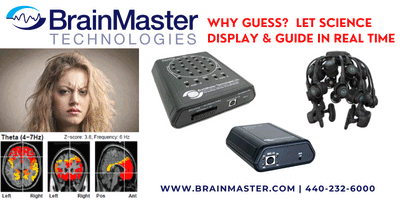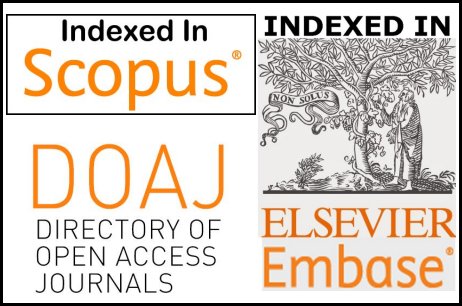Audio-Visual Entrainment (AVE) Therapy in Reducing Symptoms of Pseudobulbar Affect (PBA): Two Case Studies
DOI:
https://doi.org/10.15540/nr.12.1.40Keywords:
Pseudobulbar Affect, Audio-Visual Entrainment, CNS-LS, Neurological therapy, Emotional Dysregulation, Nonpharmacological interventionAbstract
Introduction. Pseudobulbar affect (PBA) is characterized by involuntary episodes of laughter or crying, often associated with neurological disorders, significantly impacting the quality of life. This study investigates the effectiveness of audio-visual entrainment (AVE) therapy in reducing PBA symptoms. Methods. The study employed a one-group pretest–posttest experimental design with a sample of 472 individuals from Baghdad, Iraq. Two participants diagnosed with multiple sclerosis and amyotrophic lateral sclerosis underwent 40 AVE sessions over 2 months using the DAVID Delight Pro device. The Center for Neurologic Study-Lability Scale (CNS-LS) was used to measure PBA symptoms before and after the intervention, with a follow-up 3 months postintervention. Results. Both participants showed significant reductions in CNS-LS scores postintervention (male: 22 to 14; female: 25 to 12), indicating decreased frequency and intensity of emotional outbursts. The Wilcoxon signed-rank test revealed significant differences between pretest and posttest scores with a large effect size (r ≈ −0.95). Conclusion. AVE therapy effectively reduces PBA symptoms, demonstrating lasting benefits at a 3-month follow-up. This study supports AVE as a promising nonpharmacological treatment for PBA, encouraging further research on its application to other neurological conditions.
References
Aftanas, L., Miroshnikova, P. V., Morozova, N. B., Yarosh, S. V., Gilinskaya, O. M., & Khazankin, G. R. (2016). Audio-visual-tactile brainwave entrainment decreases night arterial blood pressure in patients with uncontrolled essential hypertension: Placebo controlled study [Paper presentation]. SAN2016 Meeting, Corfu, Greece. https://doi.org/10.3389/conf.fnhum.2016.220.00063
Ahmed, A., & Simmons, Z. (2013). Pseudobulbar affect: Prevalence and management. Therapeutics and Clinical Risk Management, 9, 483–489. https://doi.org/10.2147/TCRM.S53906
Arciniegas, D. B., Lauterbach, E. C., Ginsberg, D. L., Anderson, K. E., Chow, T. W., Flashman, L. A., Hurley, R. A., Kaufer, D. I., McAllister, T. W., Reeve, A., Schiffer, R. B., & Silver, J. M. (2014). The differential diagnosis of pseudobulbar affect (PBA): Distinguishing PBA among disorders of mood and affect. CNS Spectrums, 10(S5), 1–16. https://doi.org/10.1017/S1092852900026602
Bahrami, S. (2024). Utilizing music therapy for enhanced recovery from neurologic disease complications. SVOA Neurology, 5(1), 7–20. https://doi.org/10.58624/SVOANE.2024.05.0121
Basu, S., Phogat, R., Banerjee, B., & Parmananda, P. (2024). Visual entrainment improving working memory of children with and without ADHD/ASD: Preliminary observations. Journal of Indian Association for Child and Adolescent Mental Health, 20(3), 229–241. https://doi.org/10.1177/09731342241252533
Berg, K., & Siever, D. (2004). The effect of audio-visual entrainment in depressed community-dwelling senior citizens who fall. In-house manuscript. Mind Alive Inc.
Berg, K., & Siever, D. (2009). A controlled comparison of audio-visual entrainment for treating seasonal affective disorder. Journal of Neurotherapy, 13(3), 166–175. https://doi.org/10.1080/10874200903107314
Brooks, B. R., Crumpacker, D., Fellus, J., Kantor, D., & Kaye, R. E. (2013). PRISM: A novel research tool to assess the prevalence of pseudobulbar affect symptoms across neurological conditions. PLoS ONE, 8(8), Article e72232. https://doi.org/10.1371/journal.pone.0072232
Butcher, J. N., & Han, K. (1996). Methods of establishing cross-cultural equivalence. In J. N. Butcher (Ed.), International adaptations of the MMPI-2: Research and clinical applications (pp. 44–63). University of Minnesota Press.
Chen, L., Ye, S., Murphy, D., Wu, J., Zhang, H., Liu, H., Zou, B., Hou, G., Zhang, N., Yin, T., Smith, R. A., & Fan, D. (2024). Chinese translation and validation of the center for neurologic study lability scale. Neurology and Therapy, 13(3), 739–747. https://doi.org/10.1007/s40120-024-00605-w
Cleveland Clinic. (2025). Pseudobulbar affect (PBA): Causes, symptoms & treatment. Cleveland Clinic. Retrieved March 2, 2025. https://my.clevelandclinic.org/health/diseases/17928-pseudobulbar-affect-pba
Cronbach, L. J. (1951). Coefficient alpha and the internal structure of tests. Psychometrika, 16(3), 297–334. https://doi.org/10.1007/BF02310555
Cummings, J. L. (2017). Pseudobulbar affect. In B. Tousi & J. Cummings (Eds.), Neuro-Geriatrics (pp. 389–393). Springer.
Gallina, J. (2022). Alpha oscillations index the functionality and the plastic changes of the visual system [Dissertation thesis], University of Bologna. https://doi.org/10.48676/unibo/amsdottorato/10265
Hicks, A. J., Clay, F. J., Ponsford, J. L., Perry, L. A., Jayaram, M., Batty, R., & Hopwood, M. (2020). Pharmacotherapy for the pseudobulbar affect in individuals who have sustained a traumatic brain injury: A systematic review. Neuropsychology Review, 30, 28–50. https://doi.org/10.1007/s11065-020-09427-7
Jain, S. (2014). Pseudobulbar affect: No laughing matter. Current Psychiatry, 13(4), 66–67.
Joyce, M., & Siever, D. (2000). Audio-visual entrainment program as a treatment for behavior disorders in a school setting. Journal of Neurotherapy, 4(2), 9–15. https://doi.org/10.1300/J184v04n02_04
King, R. R., & Reiss, J. P. (2013). The epidemiology and pathophysiology of pseudobulbar affect and its association with neurodegeneration. Degenerative Neurological and Neuromuscular Disease, 3, 23–31. https://doi.org/10.2147/DNND.S34160
Mayo Clinic Staff. (2018). Diagnosis and treatment of pseudobulbar affect. Mayo Clinic Staff. https://www.mayoclinic.org/diseases-conditions/pseudobulbar-affect/diagnosis-treatment/drc-20353741
Miller, A., Pratt, H., & Schiffer, R. B. (2011). Pseudobulbar affect: The spectrum of clinical presentations, etiologies and treatments. Expert Review of Neurotherapeutics, 11(7), 1077–1088. https://doi.org/10.1586/ern.11.68
Mind Alive Inc. (2024). Now there is a pharmaceutical-free way to manage Concussion/Brain Injury/TBI. Concussion & Brain Injury. https://mindalive.com/collections/concussion-and-brain-injury
Moore, S. R., Gresham, L. S., Bromberg, M. B., Kasarkis, E. J., & Smith, R. A. (1997). A self report measure of affective lability. Journal of Neurology, Neurosurgery, & Psychiatry, 63(1), 89–93. https://doi.org/10.1136/jnnp.63.1.89
Riera, A. R. P. (2024). The role of facies in clinical diagnosis: Cambridge Scholars Publishing.
Robinson-Smith, G., & Grill, J. D. (2007). Recognizing involuntary emotional expression disorder. Journal of Neuroscience Nursing, 39(4), 202–207. https://doi.org/10.1097/01376517-200708000-00003
Rosen, H. (2008). Dextromethorphan/quinidine sulfate (Zenvia) for pseudobulbar affect. Drugs of Today (Barcelona, Spain: 1998), 44(9), Article 661. https://doi.org/10.1358/dot.2008.44.9.1258664
Schiffer, R., & Pope, L. E. (2005). Review of pseudobulbar affect including a novel and potential therapy. The Journal of Neuropsychiatry Clinical Neuroscience, 17(4), 447–454. https://doi.org/10.1176/jnp.17.4.447
Siever, D. (2004). Audio-visual entrainment: The neurobiology of affective disorders and clinical implications of audio-visual entrainment. Biofeedback Magazine, 32(4), 1–15.
Siever, D. (2008). Applying audio-visual entrainment technology for attention and learning (Part 3). Biofeedback Magazine, 31(4), 1–15. https://citeseerx.ist.psu.edu/document?repid=rep1&type=pdf&doi=480f1b101cd24fcbc30e92347e0012fd49e2a937
Siever, D. (2012). Audio-visual entrainment: A novel way of boosting grades and socialization while reducing stress in the typical college student. Biofeedback, 40(3), 115–124. https://doi.org/10.5298/1081-5937-40.3.02
Siever, D., & Collura, T. (2017). Audio–visual entrainment: Physiological mechanisms and clinical outcomes. In J. R. Evans & R. P. Turner (Eds.), Rhythmic stimulation procedures in neuromodulation (pp. 51–95). Academic Press.
Smith, R. A., Berg, J. E., Pope, L. E., Callahan, J. D., Wynn, D., & Thisted, R. A. (2004). Validation of the CNS emotional lability scale for pseudobulbar affect (pathological laughing and crying) in multiple sclerosis patients. Multiple Sclerosis Journal, 10(6), 679–685. https://doi.org/10.1191/1352458504ms1106oa
Thomas, N., & Siever, D. (1989). The effect of repetitive audio/visual stimulation on skeletomotor and vasomotor activity. In D. Waxman, D. Pederson, I. Wilkie, & P. Meller, (Eds.), Hypnosis: 4th European Congress at Oxford (pp. 238–245). Whurr Publishers.
Weiten, W., Lloyd, M. A., & Lashley, R. L. (1991). Psychology applied to modern life adjustment in the 90s (3rd ed.). Thomson Brooks/Cole Publishing Co.
Work, S. S., Colamonico, J. A., Bradley, W. G., & Kaye, R. E. (2011). Pseudobulbar affect: An under-recognized and under-treated neurological disorder. Advances in Therapy, 28(7), 586–601. https://doi.org/10.1007/s12325-011-0031-3
World Medical Association. (2013). World Medical Association Declaration of Helsinki: Ethical principles for medical research involving human subjects. JAMA, 310(20), 2191–2194. https://doi.org/10.1001/jama.2013.281053
Young, F. G., & Nguyen, D. (2020). Treatment of pseudobulbar affect (PBA) in a patient with a history of traumatic brain injury, partial brain resection, and brainstem stroke: A case report. Journal of Medical Case Reports, 14(1), Article 235. https://doi.org/10.1186/s13256-020-02525-3
Downloads
Published
Issue
Section
License
Copyright (c) 2025 Adil Abdul-Rehman Siddiq Al-Salihy

This work is licensed under a Creative Commons Attribution 4.0 International License.
Authors who publish with this journal agree to the following terms:- Authors retain copyright and grant the journal right of first publication with the work simultaneously licensed under a Creative Commons Attribution License (CC-BY) that allows others to share the work with an acknowledgement of the work's authorship and initial publication in this journal.
- Authors are able to enter into separate, additional contractual arrangements for the non-exclusive distribution of the journal's published version of the work (e.g., post it to an institutional repository or publish it in a book), with an acknowledgement of its initial publication in this journal.
- Authors are permitted and encouraged to post their work online (e.g., in institutional repositories or on their website) prior to and during the submission process, as it can lead to productive exchanges, as well as earlier and greater citation of published work (See The Effect of Open Access).











